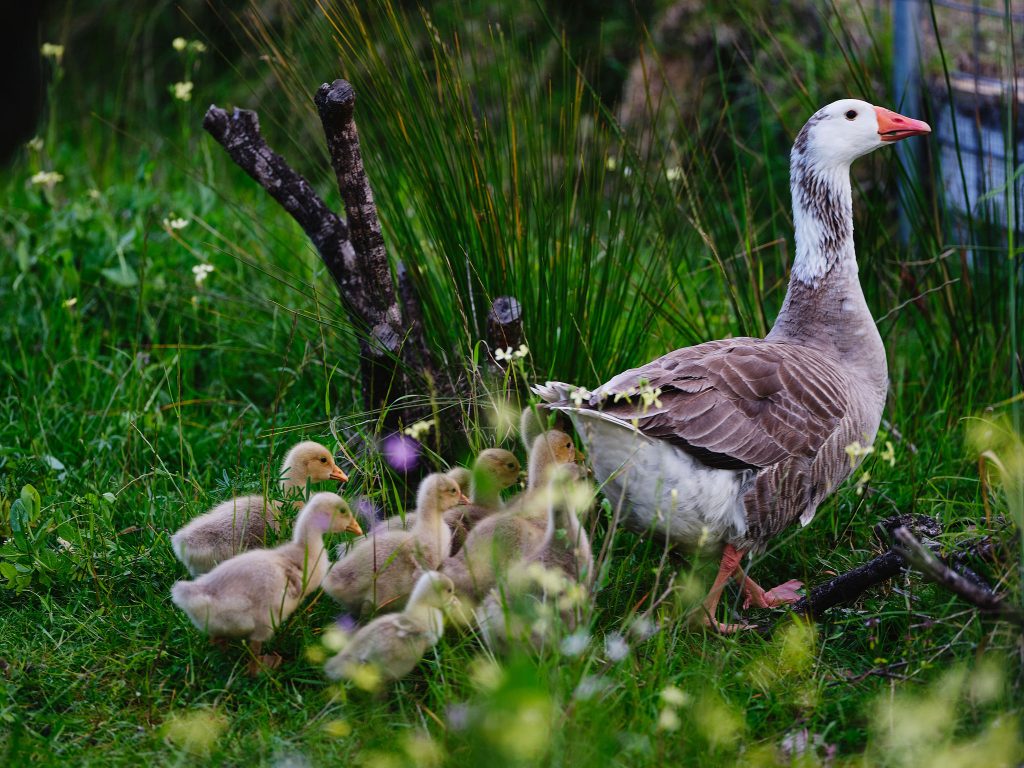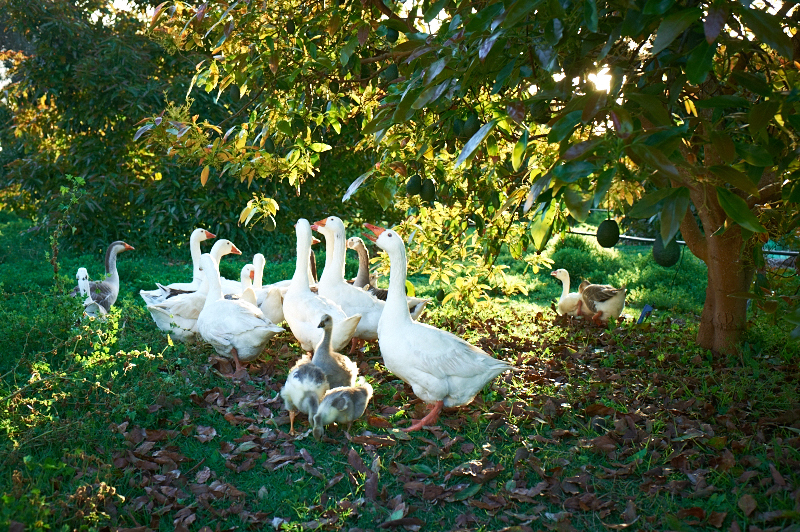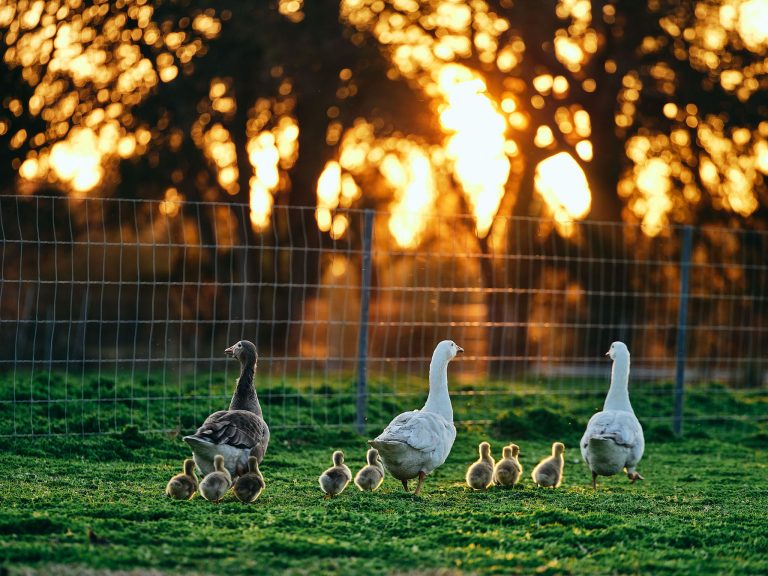Geese Integrated into a Certified Biodynamic Farming System
by Jamie & Lara McCall, Burnside Organic Farm

We started farming 26 years ago, with 3 young boys playing in the dirt. The farm has been certified Organic/Biodynamic for 24 years. Today two of our sons are starting to take some responsibility and succession planning is happening.
Our main hurdle was always kikuyu grass competing with the newly planted vineyard and avocado trees. Geese have been the solution and have so many benefits for our farm. They do take a lot of managing, taming and fencing. With good fencing and systems they can make your farm thrive naturally. A perfectly integrated Permaculture system. We love our geese and they are our workers.
Spring is a beautiful time of year when you keep geese. Goslings are born between August and October in clutches of between only two or three, but up to a dozen. Geese co-parent, so Mum and Dad lead the goslings about and show them what to eat and bravely defend them from any threat.

Geese traditionally had a place as orchard animals. They are grazers, and prefer grass to any other feed, though they will try various broadleaf plants and shrubs, and can eat ripening fruit. Grass is a challenge to the orchardist, particularly the perennial running grasses, particularly kikuyu in the south-west WA environment. Perennial grasses compete for nutrients in the shallow root zone preferred by most fruit trees, and thrive over the summer growing months under irrigated conditions in out Mediterranean climate. Geese will consume grass so thoroughly that the root reserves are exhausted in trying to re-grow new shoots and the grass dies. All this is accomplished with no digging or scattering of mulch that accompanies chickens. Geese also control slugs and snails as a side dish to their grass main course. Their manure looks like finely blended grass shoots, and the minimal nutrition they derive from their diet means they are voracious consumers, eating all day and well into moonlit nights.
Forty geese will eliminate kikuyu from an acre of ground in a year if they are concentrated permanently in that spot. If they are rotated the grass may come back in less heavily grazed areas and repeated goose exposure may be necessary.
In our climate (no frosts, coastal Margaret River) the geese need no shelter other than the orchard trees. They have shown no interest in shelters erected for their use. Their main requirements are protection from predators and water.

We predator fenced our entire avocado orchard and vineyard areas to allow the geese permanent safe grazing. This has worked very well, but currently we are downsizing to a central protected area with gates that can be opened during the day to allow rotational grazing to continue to hold grasses at bay in various areas and eliminate grasses in some new areas. This will be cheaper in terms of resources and maintenance, but a little more work with nightly closing of gates. While geese can fly they have no great desire to do so, and are content to mostly walk. A 600mm netting fence, or close-set ring-lock fencing will keep them confined, as will mobile chicken netting with no need for electrification.
Water is needed for geese to drink and wash out their beaks and nasal passages. They love to swim. In one area we have a pond, with fenced off riparian vegetation for their needs. They seem to consume any water plant we have established other than Taro. They defecate in the water so we use a solar pump to circulate the pond water through a nutrient stripping basin to keep it clear. In another area we set up a long shallow salvage yard trough that is just deep enough for them to have a paddle in. It measures about 600mm wide by 6m long. It is connected to a windmill when in use and the clean water coming in at one end displaces the dirty water over the edge. The trough is located next to a well on free draining sand so excess overflow can filter through the sand to return to the groundwater.
We feed the geese a few handfuls of wheat every morning (and evening when there are goslings) which supplements their feed and keeps them friendly, which allows us to move them around the property with a bucket of wheat.
They can be noisy and messy. Don’t set them up in your back yard. But they are a delight to interact with and watch as they busily work hard for you every day.

